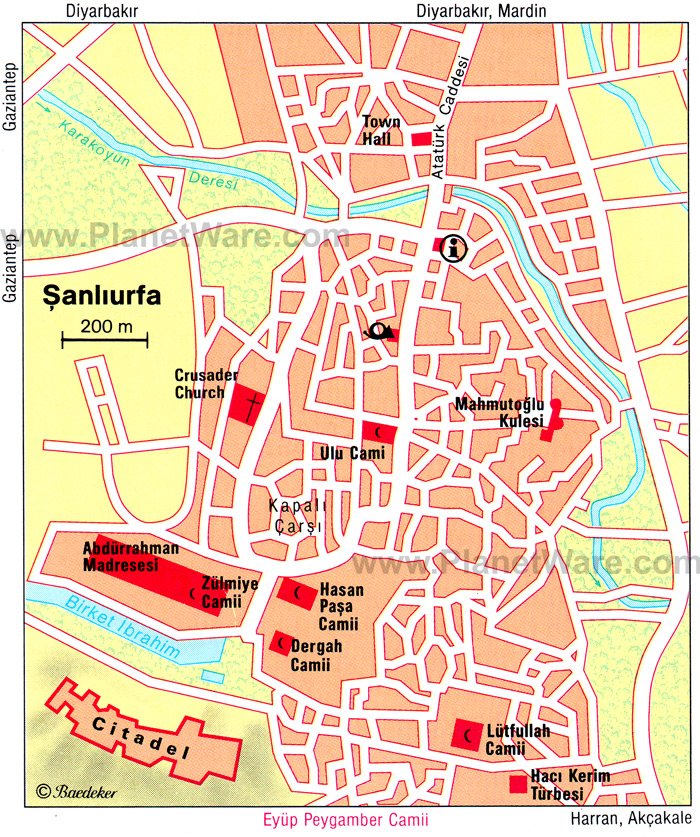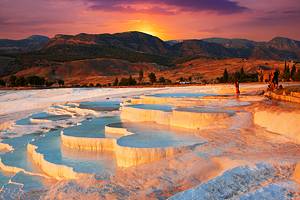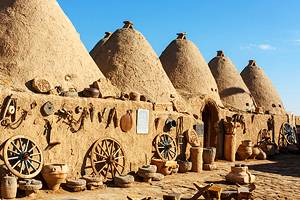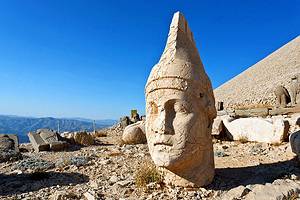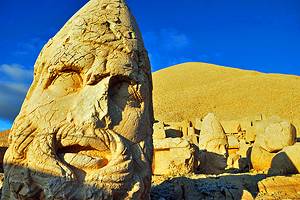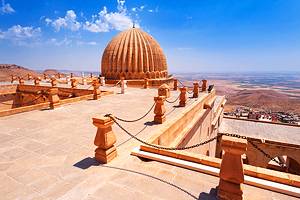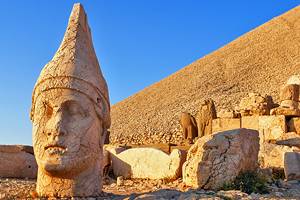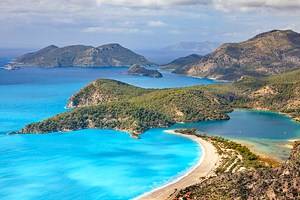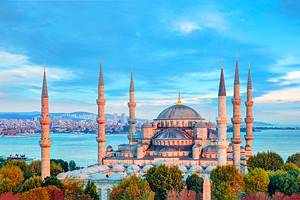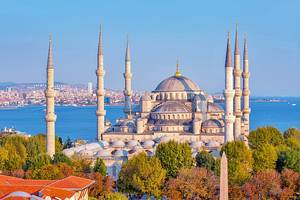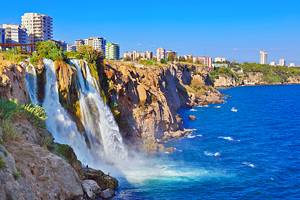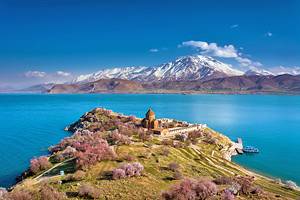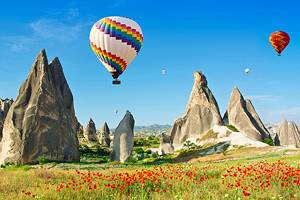Tourist Attractions in Sanliurfa
Said to be Biblical Ur, where the Prophet Abraham was born and began his monotheistic teachings, Sanliurfa is one of Turkey's great pilgrimage cities. In ancient times, it was known as Edessa and was prized by conquerors from Alexander the Great onward.
Today, this city's rich history and architecture makes it one of the best places in the country if you want to dive into Turkey's culture and heritage.
As well as Urfa's central district, crammed with historical things to do, including the sacred carp pools of Gölbaşı and a contemporary museum complex that ranks among one of the best in Turkey, there are many ruins scattered across the surrounding countryside.
The main tourist attraction for visitors today is the archaeological site of Göbeklitepe, just on the city's outskirts, where humanity may have first began religious belief.
Discover more of the best places to visit with our list of the top attractions and things to do in Sanliurfa.
- Visit the World's Earliest Temple at Göbeklitepe
- Feed the Sacred Carp of Gölbaşı
- Dig into History at Şanlıurfa Archaeology Museum
- Visit the Pilgrimage Sites of the Dergah Complex
- Climb Up to Şanlıurfa Castle
- Shop in the Bazaar
- Visit the Grand Mosque
- Day Trip to Harran
- Admire the Selahaddin Eyubi Mosque
- Explore Ancient Soğmatar
- Join the Pilgrims at the Cave & Complex of the Prophet Job
Visit the World's Earliest Temple at Göbeklitepe
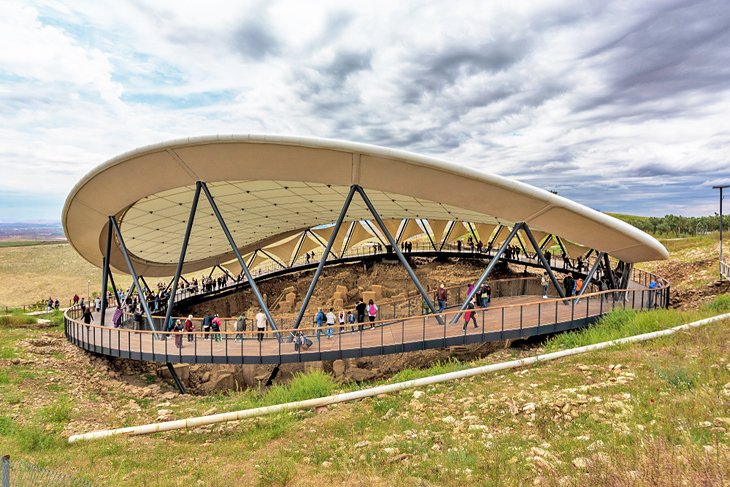
Although the ruins themselves are scant, the importance of this site for our understanding of human history cannot be overstated. When excavations began here in the mid-1990s, archaeologists discovered what is believed to be the world's oldest religious temple site.
The Neolithic pillars, carved with depictions of animals, have been dated to about 10,000 BC, turning archaeology's understanding of Neolithic culture (beforehand thought to have not included religion) on its head.
Only a tiny portion (roughly five percent) of the site has been excavated, but this hill slope containing the mammoth totem-style pillars, recently protected by a roof covering, is quite striking, and for anyone interested in our early beginnings, this is a must-see.
Official site: https://muze.gov.tr
Feed the Sacred Carp of Gölbaşı
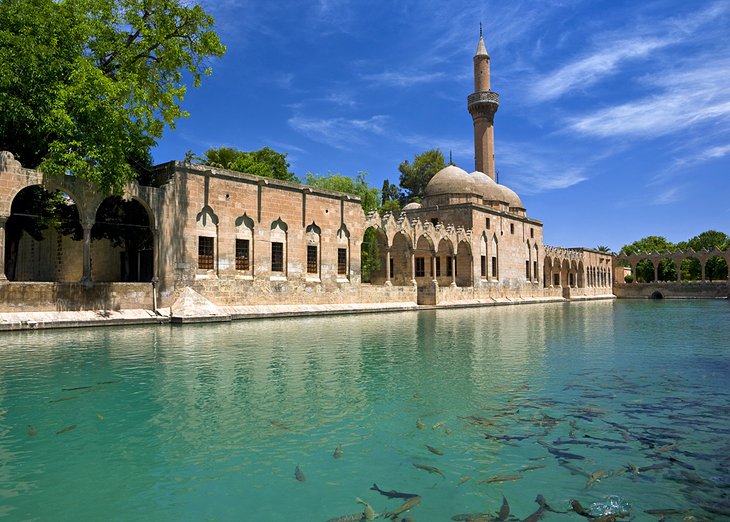
Right in the center of the city is the Gölbaşı area, a well-tended park where Sanliurfa's most important tourist attractions lie.
The Sacred Fish Ponds (balıklı göl) are surrounded by the beautiful Rızvaniye Vakfı Mosque and Medrese complex on their north side, and the Halilur Rahman Mosque to their west. Swimming in the ponds are hundreds of sacred carp, which play a central role in the story of the Prophet Abraham.
Legend says that when the prophet remonstrated with King Nimrod and the idol-worshippers of Ur, Nimrod had him burnt at the stake because of his professed monotheistic beliefs. God, though, intervened to save him, and a violent storm swept Abraham up into the air.
He landed on this very spot with the fire turning to water and the embers turning into fish. For believers then, these are holy carp, and visitors here are encouraged to feed them. It's said that anyone who kills one of the pool's carp will go blind.
Dig into History at Şanlıurfa Archaeology Museum
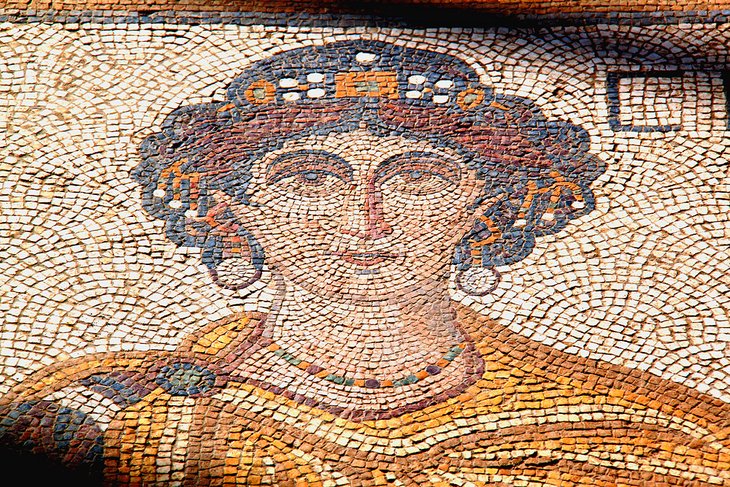
Şanlıurfa's huge museum devoted to this region's mind-boggling history is a must-do for any history fiends, with an astounding collection of artifacts on display from nearby excavation sites.
Over three levels, this contemporary museum weaves the story of human habitation in this region from the Neolithic to the Ottoman era.
The museum's highlights are the exhibits devoted to Göbeklitepe, and the many other pre-pottery Neolithic archaeological sites scattered through the nearby countryside.
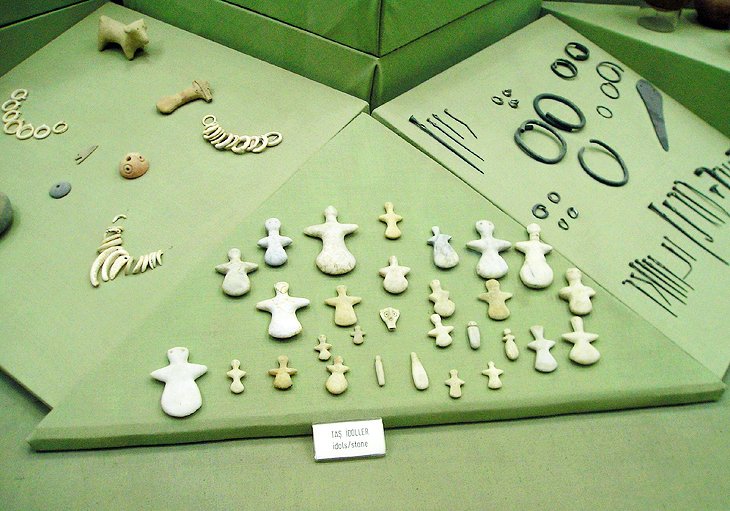
One of the collection's key pieces is the Urfa Man statue, considered the world's earliest life-size representation of a human and thought to date back to around 9000 BCE.
Neighboring the main museum building (and accessed with the same ticket) is the Haleplibahçe Mosaic Museum, where a space-age-style dome protects a rich haul of Roman-era mosaic floors, unearthed here in 2006.
The mosaics are intricate in detail and excellently preserved, allowing a peek at the lifestyle of the elites in Roman era Ancient Edessa.
Address: Haleplibahçe Caddesi
Official site: https://muze.gov.tr
Visit the Pilgrimage Sites of the Dergah Complex
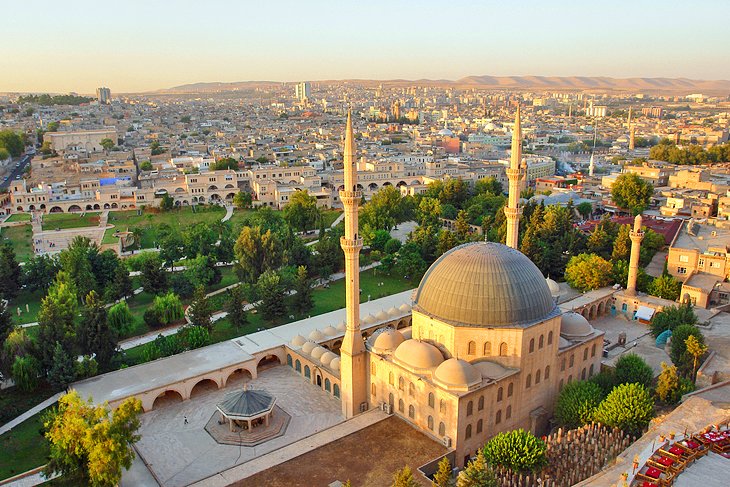
Within the grand Dergah Complex is the Hazreti Ibrahim Halilullah, the cave where the Prophet Abraham is said to have been born.
Local legend says that the prophet's mother gave birth to him here in secret because King Nimrod had been warned in a prophesy that a great leader would soon be born and so set out to kill all of Ur's newborns.
Just to the west, across a central courtyard, is the regal facade of the Mevlid-i Halil Mosque. This is an important pilgrimage site for the faithful, and once a year, just before the hajj to Mecca, pilgrims gather here to seek blessings.
Address: Gölbaşı Park
Climb Up to Şanlıurfa Castle

The remains of this ancient fortress overlooking the city center can be reached by a trail that winds up from Gölbaşı Park. The hill is known by locals as Nimrud Kürsesi (Nimrod's Pulpit), and whole colonies of hermit ibises nest on the steep rock faces.
A 12-meter manmade ditch separates the castle from the hinterland. The castle's age is not known, but local lore states that this is where the Prophet Abraham's funerary pyre was built by King Nimrod.
The actual fortifications on the hilltop are either (according to which history you read) Greek, Byzantine, Crusader, or Ottoman. The external wall still has three gates, and inside, the ruins of 25 fortified towers can be seen.
Shop in the Bazaar
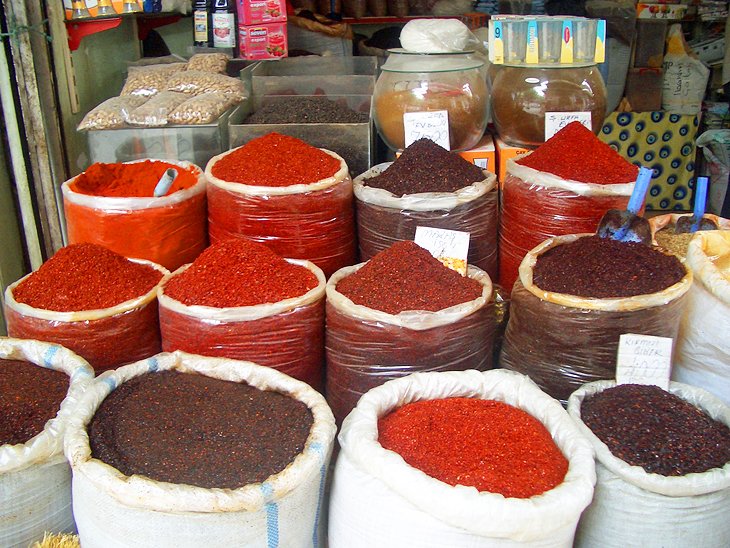
The city's bazaar area is one of the most authentic in Turkey, and a visit here is one of the most popular things to do. Amid winding alleyways crammed with stalls, the aromas of spice, leather, and grilled meat from the kebab vendors all mix in the air.
You can find just about anything here, from cheap jeans and plastic household goods to handmade leatherwork, antiques, and beautiful metalwork. It's a great place to get lost for a couple of hours and soak up the atmosphere.
A wonderful well-preserved han (caravanserai) within the bazaar has a tea shop in its central courtyard.
The main entrances into the bazaar area are off Göl Caddesi.
Visit the Grand Mosque
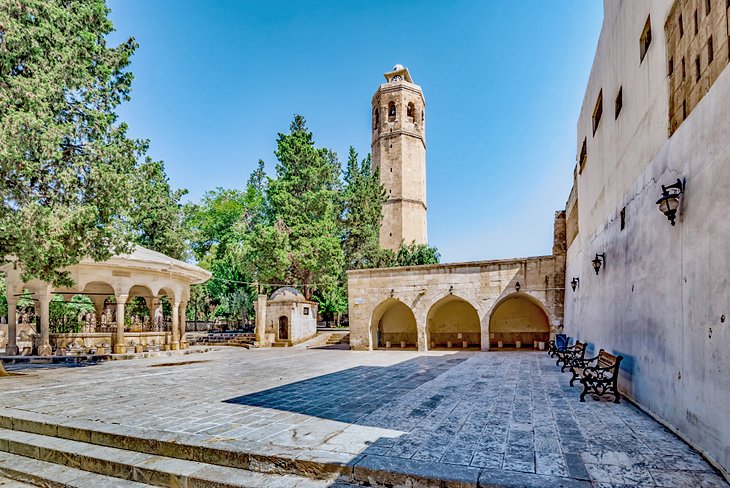
In the central city, the 12th-century Grand Mosque (Ulu Cami) represents the major historical changes in Şanlıurfa and how certain buildings and sites have been rebuilt and reused across the centuries.
The mosque was erected on the site of the former 6th-century Church of St. Stephen, which in turn replaced the synagogue that originally stood here.
The western side of the building boasts an unusual octagonal minaret, probably retained from the church. Inside, the prayer rooms are laid out as a cross vault with a simple dome above the prayer niche.
The mosque was commissioned by Nureddin, son and successor to the Seljuk governor of Mosul, Imadeddin Zengi, who founded the Zengid dynasty.
Address: Divanyolu Caddesi
Day Trip to Harran
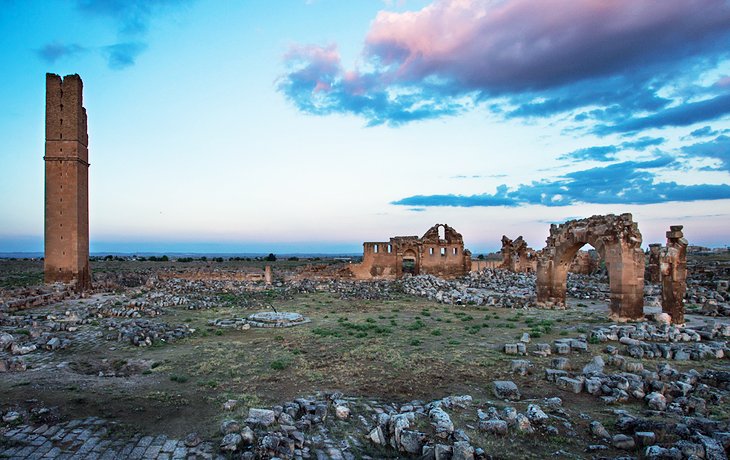
This ancient town is thought to have been settled from the 3rd millennium BCE.
Although most famous for its distinctive mud-brick beehive houses (a local style of architecture that probably came into being due to a lack of wood), Harran is also home to two important ruins.
The fortified remnants on the kale (castle) settlement mound date from the Fatimid period of the 11th century, although there is evidence that some kind of fortress building has stood on this spot since the Hittite era.
On the other side of the village are the Ulu Cami ruins, where Umayyad Caliph Marwan II built a mosque and medresa (theological college) complex in the 8th century, though little survives today except for the unusual square minaret.
Near the modern district of Harran, you can also see the remnants of the city walls which once ran for four kilometers around the town.
- Read More: Exploring the Attractions of Ancient Harran
Admire the Selahaddin Eyubi Mosque
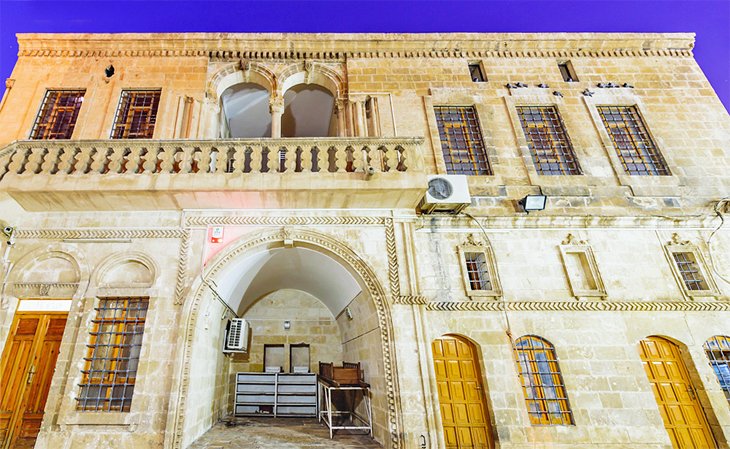
The city's most beautiful mosque has to be Selahaddin Eyyubi Cami, which has been finely restored to its former glory.
The bulky building was converted into a mosque from its original function as the St. John the Baptist Church, which dates back to the 5th century and was once the largest church in the region.
Parts of the original church's structure and design, including some half-columns and the original altar, were incorporated into the conversion and can still be easily spotted within the mosque's cavernous interior.
The mosque is hidden away in the alleys that climb up the hill just north of Gölbaşı Park.
Address: Ince Sokak
Explore Ancient Soğmatar
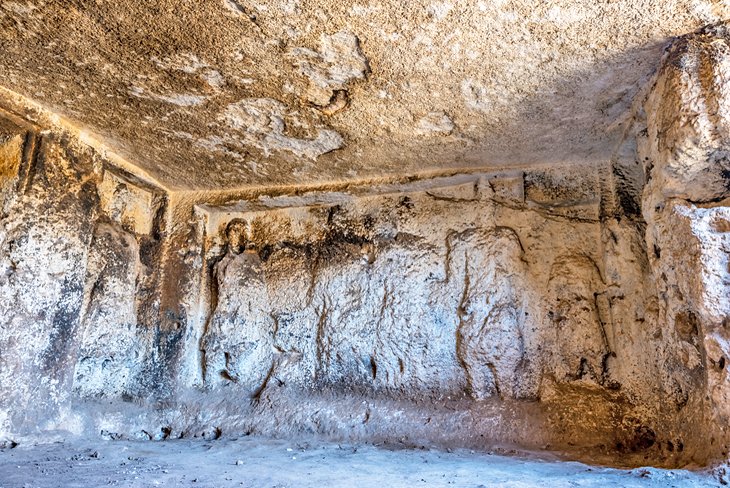
The modern hamlet of Soğmatar (about 82 kilometers southeast of Şanlıurfa) lies amid the extraordinary ruins of an ancient cult center and necropolis.
From around CE 150 to 200, Soğmatar was a Sabian religious center devoted to worshipping the moon god Sin.
Scattered across the hills surrounding the village are the remnants of temples once dedicated to the moon god, sun god, and planet gods, as well as rock inscriptions carved with elaborate Assyrian script. Over 120 rock tombs have been discovered here as well.
In the village itself, a large cave complex contains a shrine to the Moon god decorated with statues carved into the cave walls and more Assyrian inscriptions.
Join the Pilgrims at the Cave & Complex of the Prophet Job
In the south of Şanlıurfa is another of the city's pilgrimage sites, this one devoted to the Prophet Job (known as Ayyub in the Islamic faith; transliterated to Eyyüb in Turkish).
The cave inside the religious complex of Hz. Eyyüb Sabır Makamı is said to be the place where the Prophet Job rested during his long illness, and the water from the on-site well is said to have helped him regain his health.
Pilgrims come here to visit the cave, pray in the mosque that was built on this site, and to draw water from the well, which is believed to have healing properties.
Address: Eyyüb Peygamber Caddesi
More Related Articles on PlanetWare.com
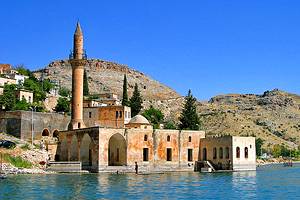
In the Area: If you're exploring the southeast of Turkey, don't miss Gaziantep for its fabulous mosaic museum and bundle of mosques. On the way, Mardin is an excellent stop off, with an old town district riddled with stone-cut architecture and old churches and monasteries.
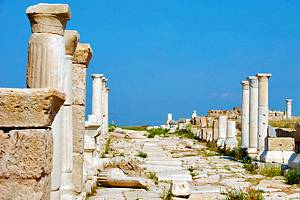
Archaeological Sites: Göbeklitepe is one of Turkey's most important archaeological sites and yet has very few visitors. For more grand ruins without the crowds, head to the Roman city of Laodikeia, with its columns and crumbled theater, or hit Mount Nemrut to see the stone-carved heads on the summit in the middle of the day (most people come here at sunrise).
